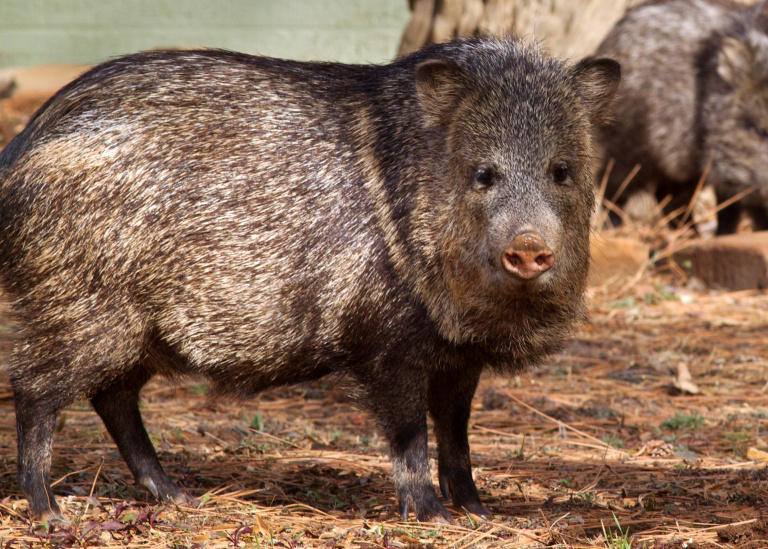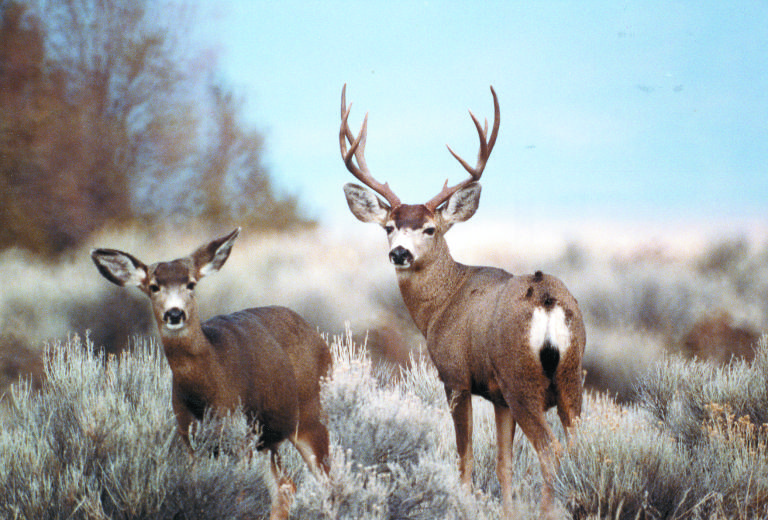Can Javelina be Hunted in California?

by Carrie Wilson
10-19-2017
Website
Question: I am new to Southern California and have been hearing about javelina in the southeastern part of the state. Can I use a pig tag or can I even hunt them? (Jared O.)
Answer: Although javelina (Pecari tajacu or Tayassu tajacu) resemble and are often mistaken for a rodent or type of wild pig (Sus scrofa), they are not rodents and are not wild pigs that are hunted commonly in California. Instead, they belong to a completely different family and are not hunted in California.
According to California Department of Fish and Wildlife (CDFW) Environmental Scientist, Gerald Mulcahy, javelina are a member of the peccary family, a group of hoofed mammals originating from South America. In the U.S., they typically occur in Arizona, New Mexico and Texas. There are no established permanent populations of them in California. Only rarely do they make their way into southeastern California. We have documented that they do occasionally cross the Colorado river in low water events, but then they return back into Arizona to their home ranges.
Javelina are very interesting animals that many people may not know much about. They live and travel in family units comprised of anywhere between two animals up to a herd of more than 20 individuals. One of the reasons why they often travel in herds is to help defend their territories and ward off predators. They stand about two feet tall and can weigh between 35-55 pounds. Their vision is fairly poor but they do have a very well developed sense of smell, along with a scent gland on their lower back. They are very social among themselves and the scent gland previously mentioned allows them to better identify one another. Contrary to popular belief, javelina really are good tasting, if handled and prepared properly.
Because javelina do not normally occur in California and thus are not listed in the California Code of Regulations Title 14 as a huntable species, they would be considered nongame mammals (pursuant to the Fish and Game, section 4150). Therefore, since they are nongame mammals and no hunting regulations exist for them, javelina cannot be hunted (see the California Code of Regulations Title 14, section 472).
Bottom line … even if you were scouting around in the southeastern part of the state and came upon an individual or a family group of them that had strayed across the state line from an adjacent state, consider yourself lucky to have seen them but know javelina are illegal to hunt, period.
If you’re interested in learning more about these interesting animals, please check out the Arizona Game and Fish Department “Living with Javelina” website/.
Can sport fish be donated to charity for a tax credit?
Question: You mentioned in an article that sport fish cannot be assigned a value for donation purposes. I would appreciate a code/regulation that directly prohibits this for tax purposes. In San Diego we were given a form from Fisherman’s Processing with Federal Tax ID for registered 501(c)(3) charities. Is this a state regulation? It’s all very confusing and I would appreciate clarification as there is contradicting information floating around out there. (Paul G., San Diego)
Answer: It is unlawful to sell or purchase fish caught via a sport fishing license (FGC, section 7121). Therefore, fish taken via a sport fishing license cannot be easily assigned a monetary value. It would be very difficult to determine the fair market value of a sport-caught fish because sport fishing and commercial fishing are very different. However, there is a provision that does provide for the exchange of certain sport caught fish for filleted, smoked or canned fish (CCR Title 14, Section 231). This regulation only applies to a limited range of species though, primarily tuna, and they include: albacore, bluefin, yellowfin and bigeye tunas, as well as skipjack and yellowtail. This regulation may be helpful in determining the value of a donation if you decide to donate a portion of any of the above listed species to a qualified non-profit charitable organization.
Are rosy red minnows legal baits?
Question: Are “rosy red minnows” legal baitfish in California? They are a species of “fathead minnows.” I have read the handbook and fatheads are legal to be used as bait. Considering rosies are fatheads, I’d assume they are legal. Please clarify this for me. I plan to go fishing in the Central Valley region of California. (Za Y.)
Answer: You are correct! Rosy reds are just fatheads of a different color. California is divided into seven sport fishing districts and the use of fathead minnows as baitfish is legal throughout a large portion of California. However, fathead minnows are not legal baitfish in the Southern, Sierra and North Coast districts, though they may be used in Shasta Lake. A map of the California sport fishing districts can be found on the back of the annual California Freshwater Sport Fishing Regulations booklet (CCR Title 14, sections 4.00-4.30; 6.31-6.37.)
Carrie Wilson is a marine environmental scientist with the California Department of Fish and Wildlife. While she cannot personally answer everyone’s questions, she will select a few to answer each week in this column. Please contact her at CalOutdoors@wildlife.ca.gov.
More Reports

10-13-2017
Question: The new California Mammal Hunting Regulations book that just came out describes a new law to deter poaching of trophy...... Read More
Invasive New Zealand Mudsnails Found in Carmel River
Carmel River
10-13-2017
The California Department of Fish and Wildlife (CDFW) has confirmed the presence of New Zealand mudsnails in Monterey County’s Carmel...... Read More
